#three rivers petroglyphs
Text
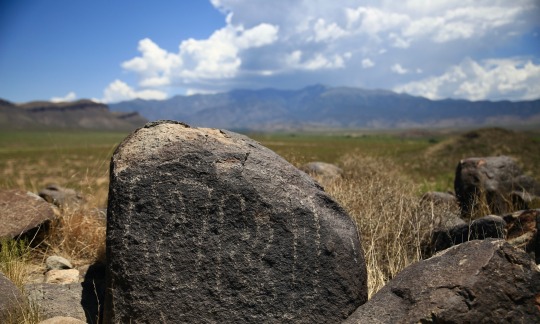
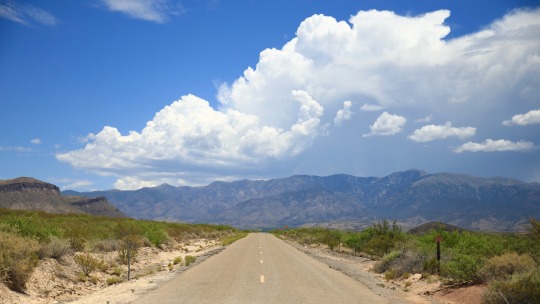
#three rivers petroglyphs#new mexico#sierra Blanca#adventure#travel#my photo#southwest#desert#mountains#photography#aesthetic#nature#ancient ones#petroglyphs#native americans#Indians#American Indians#history#anthropology#archaeology#storm#monsoon#summer
255 notes
·
View notes
Text

A shot taken at Three Rivers Petroglyph Site in New Mexico. From my gallery Southwest 1 on Redsam.com.
#photography#photographers on tumblr#my photos#35mm photography#35mm film#gallery#art print#new mexico#three rivers#petroglyphs#native american#history#old west
8 notes
·
View notes
Text
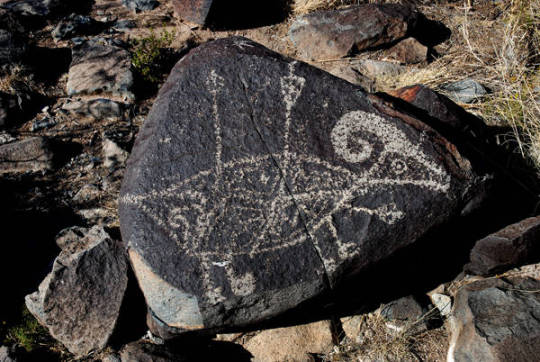
Animal Petroglyph
Petroglyph, Three Rivers Site, Mogollon, Bureau of Land Management, Otero County
Petroglyph of sheep with struck with arrows. Three Rivers Petroglyph Site was occupied by Mogollon people between 900AD to 1400AD. Now maintained by the Bureau of Land Management, Otero County, NM.
Hubbard Museum of the American West
New Mexico's Digital Collections
#petroglyphs#animal petroglyphs#sheep#mogollon#three rivers site#bureau of land management#hubbard museum of the american west#new mexico's digital collections
4 notes
·
View notes
Photo
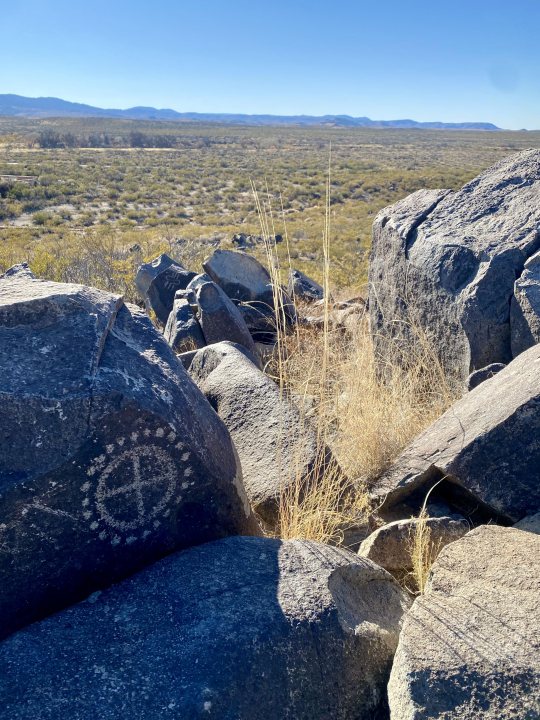
three rivers petroglyph site, new mexico
#three rivers petroglyph site#new mexico#petroglyph#mogollon#native american#history#hike#hiking#outdoors#nature#southwest#my photos#crosscountry2022
2 notes
·
View notes
Text

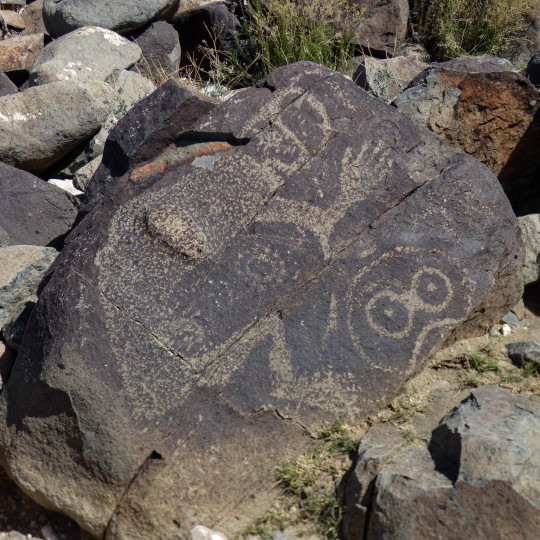
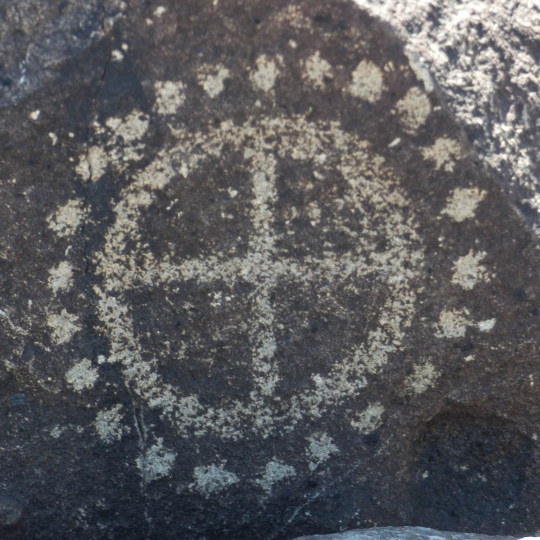




Three Rivers Petroglyph Site | Archaeologists credit the Mogollon with leaving thousands of images: humans, birds, fish, insects, plants, geometric and abstract designs. The plethora of petroglyphs adorn the basalt boulders lining a low ridge at the north end of the Tularosa Basin, dispersed across 50+ acres.
#New Mexico#OptOutside#roadtrip#travel#daytrip#nature#archaeology#anthropology#NativeAmerican#Mogollon#whataview#scenic#earthpix#NewMexico#TularosaBasin#rockart#petroglyphs#new mexico landscape
84 notes
·
View notes
Text

Three Rivers Petroglyph Site is a hidden gem, often overlooked by visitors traveling to White Sands or Ruidoso. It is located off US-54 at the end of a winding country road, 17 miles north of the Village of Tularosa. People in the area named the site based on three streams that converge there: Indian Creek, Golondrina Creek, and Three Rivers. Archaeologists credit the Mogollon with leaving thousands of images in the area: humans, birds, fish, insects, plants, geometric and abstract designs. The plethora of petroglyphs adorn the basalt boulders lining a low ridge at the north end of the Tularosa Basin, dispersed across 50+ acres.
82 notes
·
View notes
Photo

Making Offering to Amun-Ra - Rock Inscription at Wadi Hammamat Pharaoh Seti I (1290–1279 BC), 19th Dynasty, is making a offering of papyrus 𓇅𓏤𓆰 “w3ḏ” plants to the state god 𓊹 “nṯr” Amun-Ra. The god is identified by his hieroglyphic title and his double plumed 𓋛 crown. Inscription: Seti I (𓊪𓏏𓎛𓁣𓇌𓌸𓈖) “stḥy mri.n-ptḥ” ‘Seti, Beloved of Ptah’ Menmaatre (𓇳𓏠𓁦) “mn-m3ˁt-rˁ” ‘Enduring is the Maat of Ra’ Amun-Ra 𓇋𓏠𓈖𓇳𓏤𓎟𓇯𓋾�� “ı͗mn-rˁ nb pt ḥk3 w3s.t” ‘Amun-Ra, Lord of the Sky and Ruler of Thebes’ Wadi Hammamat is a dry river bed in Egypt's Eastern 𓋁𓃀𓏏𓏭𓈊 “3bty” Desert 𓅱𓂝𓂋𓏏𓈊 “wˁr.t”, about halfway between Al-Qusayr and Qena. It was a major mining region and trade route east from the Nile Valley in ancient times, and three-thousand-years 𓆳𓊪𓏏𓏤𓆾 “rnp.wt 3000” of rock carvings and graffiti make it a major scientific and tourist site today. The wadi contains many carvings and inscriptions dating from before the earliest Egyptian Dynasties to the modern era, including the only painted petroglyph known from the Eastern Desert and drawings of Egyptian 𓂋𓐝𓎀𓀂𓀭𓏪 “rmṯ” reed boats dated to 4000 BCE. 📸 kairoinfo4u - Flickr 𓋹𓎬𓋹𓎬𓋹𓎬𓋹𓎬𓋹𓎬𓋹𓎬𓋹𓎬𓋹𓎬𓋹𓎬𓋹𓎬𓋹𓎬𓋹𓎬𓋹𓎬𓋹𓎬𓋹𓎬𓋹𓎬 @egyptologylessons 𓋹𓊽𓋴𓆖𓎛𓇳𓎛 © 𓊁𓊁𓊁𓊁𓊁𓊁𓊁𓊁𓊁𓊁𓊁𓊁𓊁𓊁𓊁𓊁𓊁 #Ancientegypt #ägypten #egyptology #egypte #egitto #埃及 #مصر #egipto #이집트 #wadihammamat #rockcarving #setii #amun #seti #amunra (at Wadi Hammamat) https://www.instagram.com/p/CoINAbSu5LU/?igshid=NGJjMDIxMWI=
#ancientegypt#ägypten#egyptology#egypte#egitto#埃及#مصر#egipto#이집트#wadihammamat#rockcarving#setii#amun#seti#amunra
49 notes
·
View notes
Text
The Labyrinth
Rook has always been preoccupied with the idea of habitat.
It was born in a city and lived there eighteen years after. When it was a child, the winter would bring snow, and its father would fire up the hot tub on the back deck. Rook and its brother would sink down to their jaws in the sharp bromine water, catching ice on their tongues. The hot tub broke before the snow did, now it lays drained and fallow.
Now, winter is a rainforest. Slapping at mosquitoes and brushing off beetles and toweling off humid moisture over and over again. Rook’s home became an invasive species.
Three liters, it remembers, the first time it vacationed in the desert. If you’re going to set out into the red rock, you bring three liters in a plastic pouch on your back. You bring sunscreen, salted almonds and a charged phone. You do not go alone.
Never forget that it is someone else’s habitat.
See, Rook’s home overflows with sweat and poison ivy and a river that smells of sewage and dew. There’s nowhere to run. Last night it dreamt a hornet landed on the hollow of its throat, and its enormous stinger, flat like a lobster’s tail, slipped beneath the thin skin. It laid lurid purple eggs there, just where trachea meets bone. Tonight Rook will dream of a nest of snakes.
The trails around the resort are well-groomed and beautiful, so much so that it doesn’t feel much different than walking around the block at home. Yes, red mesas dominate the horizon, but here there is not a pebble out of place. It picks its way carefully around prickly pears, not out of fear so much as respect, and follows the brass signs down to the trail: Labyrinth, with letters punched clean through the metal.
The strange thing about this desert is that it is room-temperature, exactly the same as a warehouse department store. Rook knows that life doesn’t require a rainforest, but it can’t shake off its home so easily. Yesterday it hiked seven miles without breaking a sweat: unnatural. Today it is tired and its parents are hiking somewhere else.
Black igneous brackets Rook onto the path. It heard that there were lava flows around here, that there are tunnels just below the surface that have stayed there for thirty thousand years. Thirty thousand years is not long at all.
This place was once a seafloor, it can tell by the salt.
Meditate, says the sign labeling the labyrinth. Be at peace. Find your center. Balance your chakras.
Rook dismisses the instruction with a derisive snort, even as a pit opens where that hornet had stung it in its dreams. This is a kitschy resort and the air outside is just as cool and dry as the hotel room, but it remembers the petroglyphs on that seven-mile hike. Spirals and stick figures of spirits rising out of the dust. A blink of an eye ago, an artist chiseled their art into black desert varnish, and then came the Mormons and the air-conditioned spas.
Rook does understand it, that anyone would see their god in these monoliths. It still feels wrong.
Rook walks the spiral path. It listens to music on its airpods and does not meditate so much as debate the purpose of walking nowhere. People do it on treadmills all the time, it supposes. It takes twenty minutes to spiral inwards twenty feet, a painstaking dizziness, twenty minutes to examine every angle of the chair-sized rock in the center.
Be at peace. Find your center.
Jesus Christ.
Rook sits on the chair-sized rock and admires the view for a while. It’s not the most comfortable place to sit, sharp edges digging through its thin hiking pants, but its feet are blistered from yesterday. Its lips are dry and the scrape of air through its nostrils makes it wonder if it will bleed the next time it sneezes.
It takes a swig from its plastic water bottle. Way less than three liters, but Rook is barely two hundred yards from the hotel room. It reads the brass labyrinth sign again, backwards from this vantage point. etatideM, says the sign. ecaep ta eB.
A kind of fury crashes over Rook. Its ears ring.
Rook spits water onto the ground, darkening the sand like a bloodstain, spit-foam on the edges. After a moment, it pours the rest out too, water glugging out of clear plastic. Some of it splashes on Rook’s hiking shoes.
What happens next, it thinks. Building spas and labyrinths like summer won’t come. Balance your chakras, my ass.
The rusted, soaked sand bulges in the center. It looks like a new wellspring, about to burst, but out climbs a scorpion. Bright orange, the color of the dry rock.
Next is a river of spindly, fingernail-sized spiders, and as the hole widens, a snake struggles free like it’s leaving its very own egg. Rook stands abruptly, brushing dust off the seat of its pants, giving the rock a cautious glance before stepping back.
A beady-eyed gray mouse follows the snake, and the snake bites down on the larger animal with all its infant venom. The flow is not stemmed.
Rook backs away further as the sand starts to crumble away. It steps over the igneous trail-markers, one foot in one concentric labyrinth-ring, one foot in another. What’s the point of walking nowhere? It wants to flee, it knows it has to flee from the cartoonish black widows that have begun to hunt red ants, but the animals pay Rook no mind.
The wellspring swallows the rock Rook had rested on, and the river of animals expands heedless of the igneous markings. The river follows the path of topography instead, parting for mounds of rock, filling in footprints.
When Rook reaches the trailhead, there is no brass sign. The resort should be in view, but instead the buildings have cocooned themselves in mesa rock and the prickly pears block the path. Rook falls to its knees, lands flat on the fleshy sun-warmed earth, and feels insects between eyelashes and the backs of its ears.
Rook joins the river. There is life here after all.
#my writing#horror writing#climate change#global warming#the inherent horror of seeing a golf course and spa in the desert of utah
2 notes
·
View notes
Text

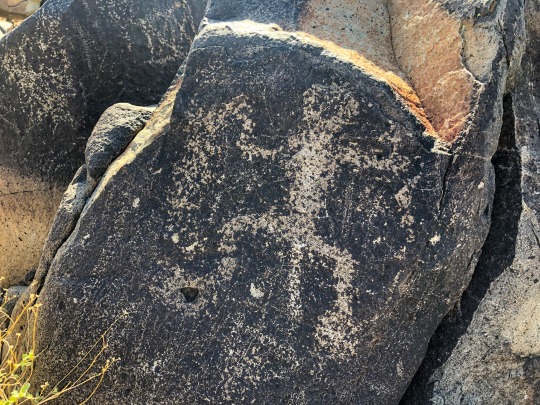

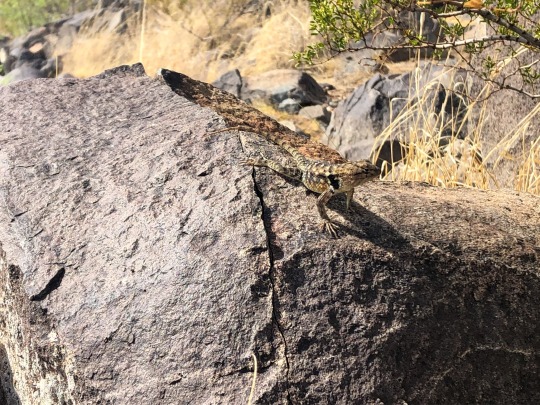


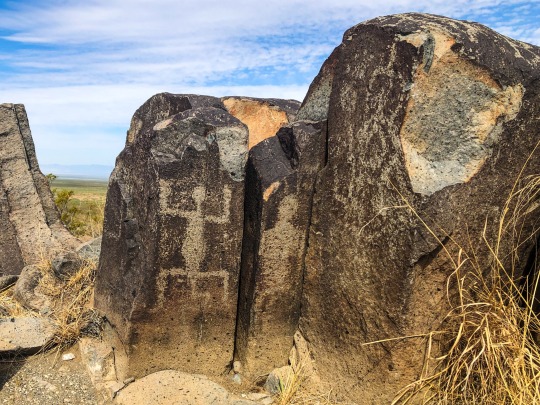

sometimes ghosts travel by day.
humans are natural, instinctual, compulsive storytellers—we don’t know how to not tell stories. we’ll tell them in any medium we can: tall tales around campfires or on long hunts; during play as children and in theaters as grown-ups; written down as poems that rhyme and poems that don’t, epic novels and short stories and everything in between, letters and articles and tweets; tribal dances and boyband choreography; music that moves your heart and soul.
and art, which can be sculptures of any material we can mold, or a photograph, or a painting so realistic it looks like a photograph, or splashes of color across a white canvas, or, or, or, or. our need to tell stories is so strong that we’ll even laboriously etch designs into rock when the need to spin a yarn strikes, as the jornada mogollon people did around 1000-1450 c.e. at the three rivers petroglyph site.
three rivers sits on the northern end of new mexico’s tularosa basin, cradled by the sacramento, san andres, and oscura mountains. as i walked through the gallery of boulders, the mountains were blushing blue in the distance and there was a cool breeze softening the rising heat of a mid-morning sun, but even more stunning were the stories.
there are over 20,000 stories told in petroglyphs at this site. stories about birds and bugs, friends and foes, rain and sun, lizards and sheep and cougars, life and death and creation. there are stories about hope, and fear, and love, and grief.
walking among them, i thought about how these stories aren’t so different than the ones we tell now. i thought about all the stories i’ve written, the fear and grief and love and hope, and i think that i would etch them into stone if i had to, too.
23 notes
·
View notes
Text
The Tarbra and their beasts
(3 rebate + 2d6-> 3 = 6 power, expending all 6 to create a race)
In the centuries following the conference, Haebarik took little action. He still roamed the world, but undertook no great journeys, performed no miracles, was content (for this time) to merely observe the other gods' works, in all their strange glories.
But power, not given an outlet, will make one for itself. On that distant continent crafted from Haebarik's arm, divine potential trickles out through the rocks, changing the seals and walruses that inhabit the continent's shores. Flippers become muscular legs, tails atrophy, teeth and organs warp to accommodate new diets, blubber shifts about the body.
Thus are born the rough beasts of Haebrach. The armor-plated Cereleds, their faces adorned with two forward-facing horns. The peaceful Gegants, heads flanked by enormous ears, a great face-tentacle to reach for food with, their bulk rivaling that of small whales. The rotund Aqach, which live on the shores of lakes and rivers, and though herbivorous are quick to assault any perceived threat. The desert-dwelling Deled, which may go for weeks without water. And of course the small and resourceful Wragh, which root around for food with their prominent tusks.
But one clade had already ventured inland of its own accord, and is thus warped more than any other. They alone tap into the true essence of this land, they alone receive that which Haebarik gave up to create their homeland. The other beasts may inhabit the world, but it is their birthright to reach out and change it.
They are the Tarbra, and theirs is the first culture on Haebrach.

(The Tarbra petroglyph above depicts a solitary herder, armed with a spear, defending a herd of smaller creatures from a predator attack. Standing off to the side is a slender horned creature bearing a woven basket.)
The Tarbra are heavy and powerfully built quadrupeds, their legs thick, their body resembling that of a Cereled or Gegant but somewhat smaller (though still similar to a human in height, and many times greater in bulk). Their eyes are set somewhat further apart than a human's, their mouths are large . Their bodies have little hair aside from a few small tufts, though female Tarbra grow prominent whiskers upon reaching maturity. Barring disease, accident, or violence, they live to be about a hundred years of age.
Growing from their back, a little below the nape of the neck, is a single muscular arm, triple-jointed, about two meters in length and tipped by three or four fingers. When not in use, it rests along a groove on their backs, the last joint folded like an elbow, the hand grasping the arm further up. Their tails are heavy and slow-moving, and chiefly serve to counterbalance the arm.
Tarbra cannot digest grass, branches, or most leaves. They may use their hand to pick fruits or dig for roots, or pick apart plants for their seeds, but few Tarbra maintain the vegetarian lifestyle of their ancestors, for they digest milk and meat with little trouble, and thus have taken to taming and herding those other beasts that roam their plains. Over the course of centuries, a number of domesticated breeds have arisen, selected for milk production, temperament, or size.
Present-day Tarbra are a nomadic people, traveling in loosely related clans of a few dozen to a few hundred individuals and their lifestock. Ownership of the animals is marked with dyes and woven collars, the design of which is a matter of great pride to the Tarbra. Most herds consist chiefly of domesticated Cereleds with some Wragh, with a few clans boasting ownership of Gegants. In drier climates, Deleds make up most of the herds. Even the Tarbra do not bother with taming Aqachs; those who attempt so do not live for long.
The Tarbra inhabit the grasslands of central Haebrach. They eschew the northwestern jungles, while the central mountain range blocks their passage to the southern steppes. A few clans have moved into the eastern desert, where they travel from oasis to oasis, forming a mostly isolated group with their own customs and tools. Somewhat ironically, though these groups know of the fertile plains in Haebrach's northeast, they no longer have access to the beasts they would need to survive there, and thus those lands remain uninhabited.
Technologically, the Tarbra generally lag behind other mortals. They do not make fire, dwellings, or clothes, but they weave plant and animal fibers into ropes, fishing-lines, and baskets. Such tasks are typically performed by groups of Tarbra, as they are inconvenient to perform with a single hand, and thus the simple words for 'labor' and 'creation' have plural connotations. To a Tarbra, 'creating something by oneself' is a mild contradiction in terms.
The Tarbra weapon of choice is the spear, and few go anywhere without a few javelins slung by their side. Many make use of spear-throwers, or atlatls, to further increase their reach. They have also developed a variety in whips, lassos, and prods for the purpose of herding beasts. A few coastal communities use harpoons to hunt airborne and seaborne prey, and some have begun experimenting with bolas and boomerangs.
The language of the Tarbra is a deep and rumbling sound, which may travel for many kilometers. The concept of an 'inside voice', or even of secrets, does not come naturally to Tarbra, even if they were to learn to speak the higher-pitched languages of others. Many Tarbra believe speech to be an act of no small consequence or imposition, and only do so when they deem it truly necessary.
Their religious views, hazy and half-remembered, have a little truth to them. The Tarbra believe that their realm is the dying body of a great god, who shares great wisdoms in his quaking death-stirrings and cyclonic final breaths. They believe that they came from the earth, and their souls will return there to await birth anew, and they believe that one day, the god will die completely, and the land will turn desolate, and their souls be reborn no more.
Though the Tarbra have no cities, one location is of significance to them. This is Lach Heral, the Place of Stones, situated near the continent's heart. Though not all Tarbra see it in their lifetimes, all know of it, and many long to visit. Here, where sea meets mountain, where desert meets plain, where the Tarbra believes the world has its center, are kept the petroglyphs that depict the great events of the Tarbra's past.
A small order of record-keepers maintains the inscriptions and deems new tales worthy of inclusion. They are renowned for their accumulated wisdom, and many come bringing them great beasts, rare foods, or precious gems in exchange for sage advice. Lach Heral is reached through a winding and well-guarded pass, with all other sides blocked by slopes too steep for the quadrupeds to climb.
Finally, in recent years a large clan of Tarbra dwelling in the coastal north has come to worship an Eppethikuja, which takes their captured enemies as sacrifice and in return sends schools of fish to strand on the beach. These Tarbra increasingly concern themselves with warfare over shepherdy, and send spearmen out in ever larger raids.
#world 02457 diegesis#worldbuilding#i felt like making something weird and one-armed centaurs should fit the bill#and yeah those animals are just rhinos/elephants/etc with weird names#rhino-herders are just conceptually cool i think
3 notes
·
View notes
Text

Three Rivers Petroglyph Site at Three Rivers, New Mexico
11 notes
·
View notes
Text


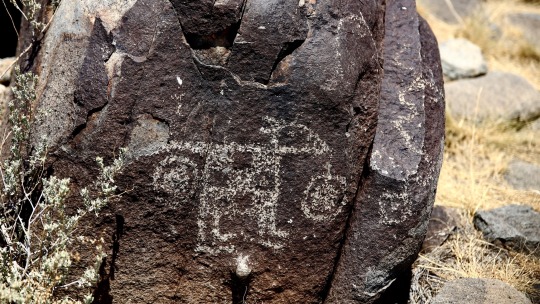
#three rivers petroglyphs#adventure#travel#my photo#southwest#desert#New Mexico#mogollon#mimbres#Anasazi#ancestral puebloans#archaeology#history#photography#aesthetic#kachina#big horn sheep
128 notes
·
View notes
Text
in GOOD things I've seen lately...
THREE golden eagles yesterday
Too many bald eagles to count including 2 that were sitting RIGHT next to each other on a branch
Coyote in the snow in broad daylight
Moose last week
sooo many ducks...
4000-350 yr old petroglyphs
one of the deepest points in the snake river
incredible beadwork and other collections items
2 separate bald eagles eating a fish while sitting on the ice
a number of kestrels
and probably other things that I'm forgetting...!
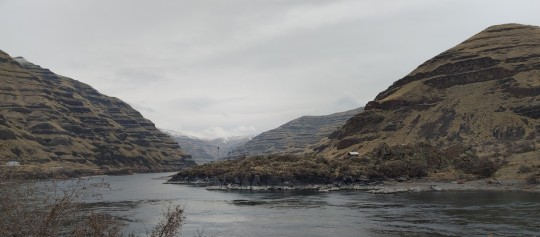
5 notes
·
View notes
Photo

Campsite in Valley of Fires Recreation Area. Towards the tracks on the way to Three Rivers Petroglyph Site. I was using the 90mm lens. This was shot handheld. #horseman #horsemancamera #horsemansw612 #sw612 #kodak #kodaktrix #kodaktrix400 #trix400 #6x12 #6x12format #rodenstock90 #newmexico #valleyoffirerecreationarea (at Valley of Fires Recreation) https://www.instagram.com/p/CgcG-xsOmh8/?igshid=NGJjMDIxMWI=
#horseman#horsemancamera#horsemansw612#sw612#kodak#kodaktrix#kodaktrix400#trix400#6x12#6x12format#rodenstock90#newmexico#valleyoffirerecreationarea
2 notes
·
View notes
Photo
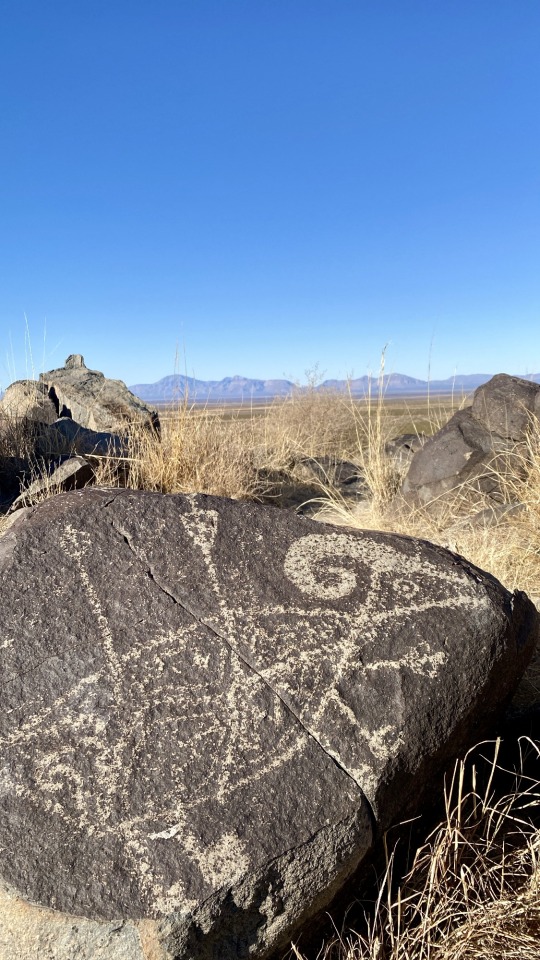
three rivers petroglyph site, new mexico
#three river petroglyph site#new mexico#otero county#petroglyph#mountains#nature#outdoors#hiking#hike#mogollon#history#my photos#crosscountry2022
1 note
·
View note
Text
Three Rivers Trading Post and the school house at the turn off to Three Rivers Petroglyphs. Tularosa Basin backdrop.
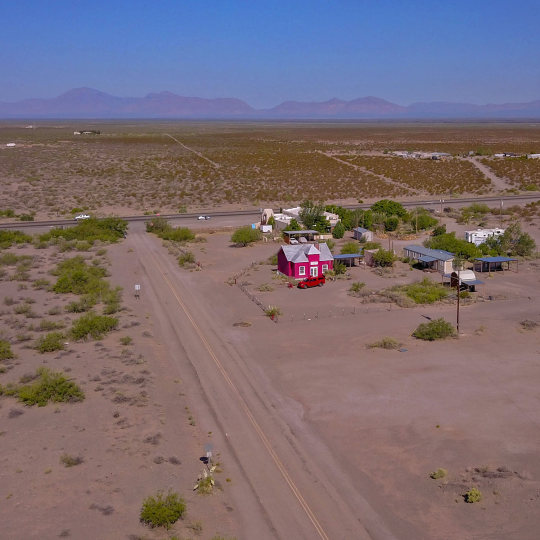
#New Mexico#NewMexico#offthebeatenpath#ranchland#openscapes#bigsky#vacation#roadtrip#travel#daytrip#ontheroadagain
19 notes
·
View notes